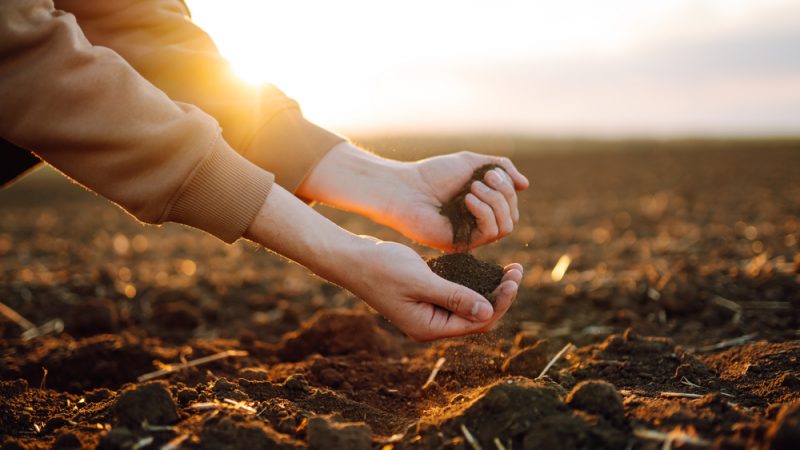
The focus of World Soil Day in December is to highlight the importance of healthy soil and increase awareness of the risks to soil and how we can help soil as it’s a vital part of our ecosystem, as well as our enjoyment when it comes to gardens and green spaces.
To help improve your soil health, here are some top tips on what to do and where some people go wrong.
Top mistakes people make with soil
1. Walking on it
They always say rain is good for the garden. However, if you rush out to plant after rainfall you may damage the soil. Healthy soil needs plenty of air pockets; when you walk over lawns or step on garden beds when it’s wet, you can end up compacting the soil underneath. This reduces the space needed for air and water to circulate and can make it harder for roots to grow and thrive.
Top tip: If you’re not sure if the soil is dry enough, grab a handful and form a ball with it. If the ball remains a solid mass, it’s still too wet to work with. If it springs away, it’s ready to go. If it dissolves into dust and can’t be shaped at all, it’s too dry.
2. Adding sand
It’s a popular treatment to add sand to heavy, cloying clay soil to try and loosen it. However, sand can often worsen the soil as it combines with the wet, heavy soil and ends up more like cement. This sand and clay soil combination makes the ground much less workable, and you may find it much harder to dig and plant with. Save the back pain by skipping the sand and instead adding organic matter such as grass cuttings and shredded leaves that can break the soil particles up and create the pores in the soil which your plants need.
Top tip: You can also add manure to improve the soil matter, but check mistake number three below before starting.
3. Adding fresh manure
Many will pick up a bag of manure outside of their local farm and think it will be great for their roses and garden in general. However, putting this fresh manure down can damage your soil and your plants too. Fresh manure can contain high levels of chemicals such as nitrogen and ammonia, which can burn plant roots. Fresh manure may also contain seeds for unwanted weeds and may have bacteria that can affect the soil and your plants.
Top tip: Manure is indeed good for the roses, but choose composted or aged manure that is at least six months old. This can help to increase nutrients and soil texture without running the risk of harming your plants.
4. Adding fertiliser
The first response to poor soil is to add fertiliser. However, adding fertiliser can be damaging unless you know what nutrients your soil needs. If you add fertiliser without knowing what condition your soil is in, then you risk upsetting the balance and adding too much of the same nutrient, and when this overload happens, plants can struggle.
Top tip: Conduct a soil test before adding fertiliser; this will give you a pH reading between 0-14. A score in the lower end means your soil is too acidic; in the higher number means your soil is too alkaline, then you can find the right fertiliser for the soil’s needs.
5. Digging and tilling
The idea of no-dig gardening is appealing to many gardeners looking to prevent back pain, and it could actually be the best option for your soil. Soil works hard by itself to organise itself into a healthy structure with many air holes for roots to grow and for water to move through. It can take the soil years to create this structure, and by digging or tilling the soil, you can disturb all of this progress and the established structure that has already formed.
Top tip: Instead of tilling and digging, opt for top dressing your plants with compost (as well as organic matter and aged manure) and try to minimise digging to less than six inches deep.
By reducing the hard work and focusing on topping up the soil with more nutrient-rich compost rather than digging down and disrupting the structure, you can get more from your soil, which means healthier, happier plants.











